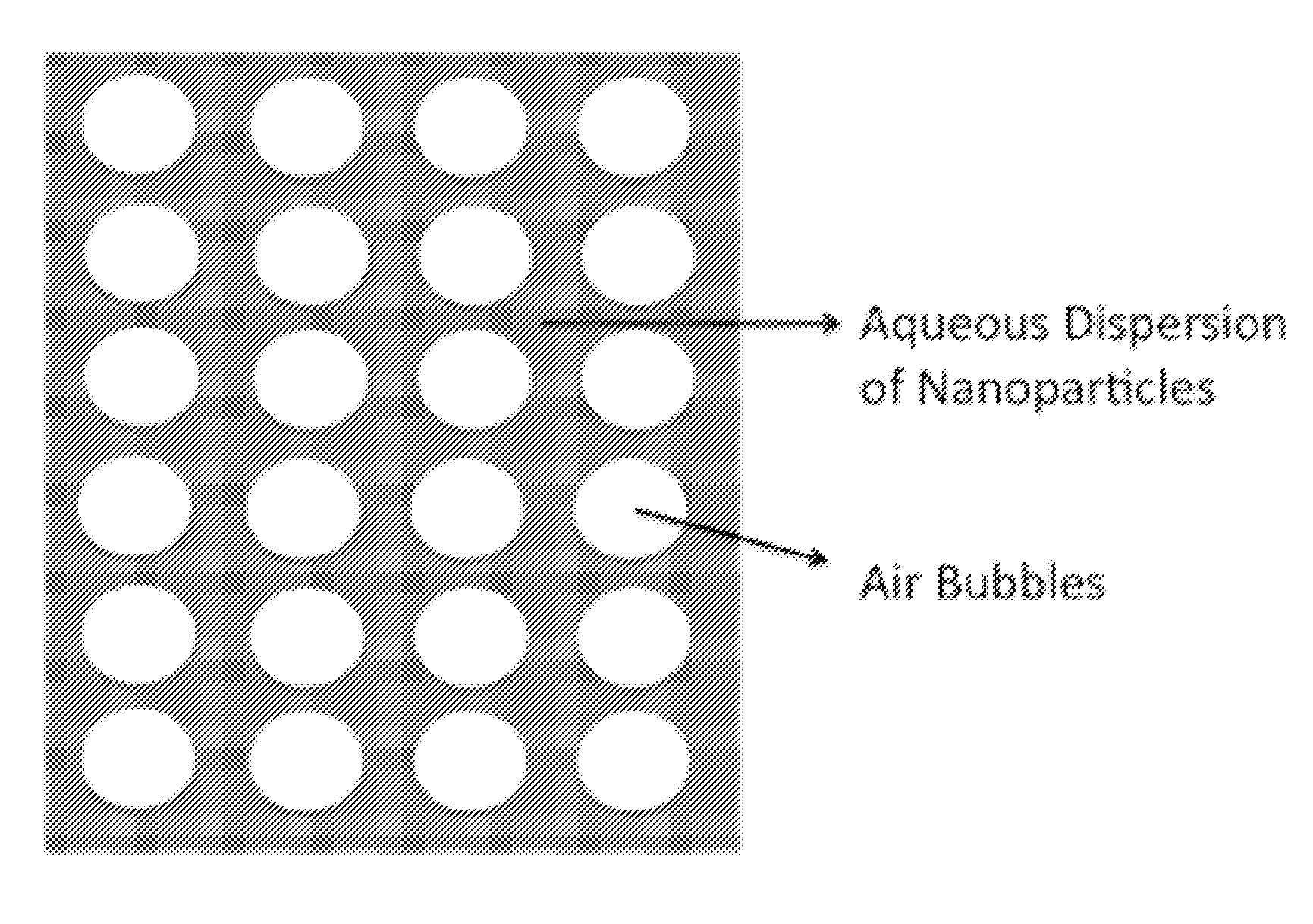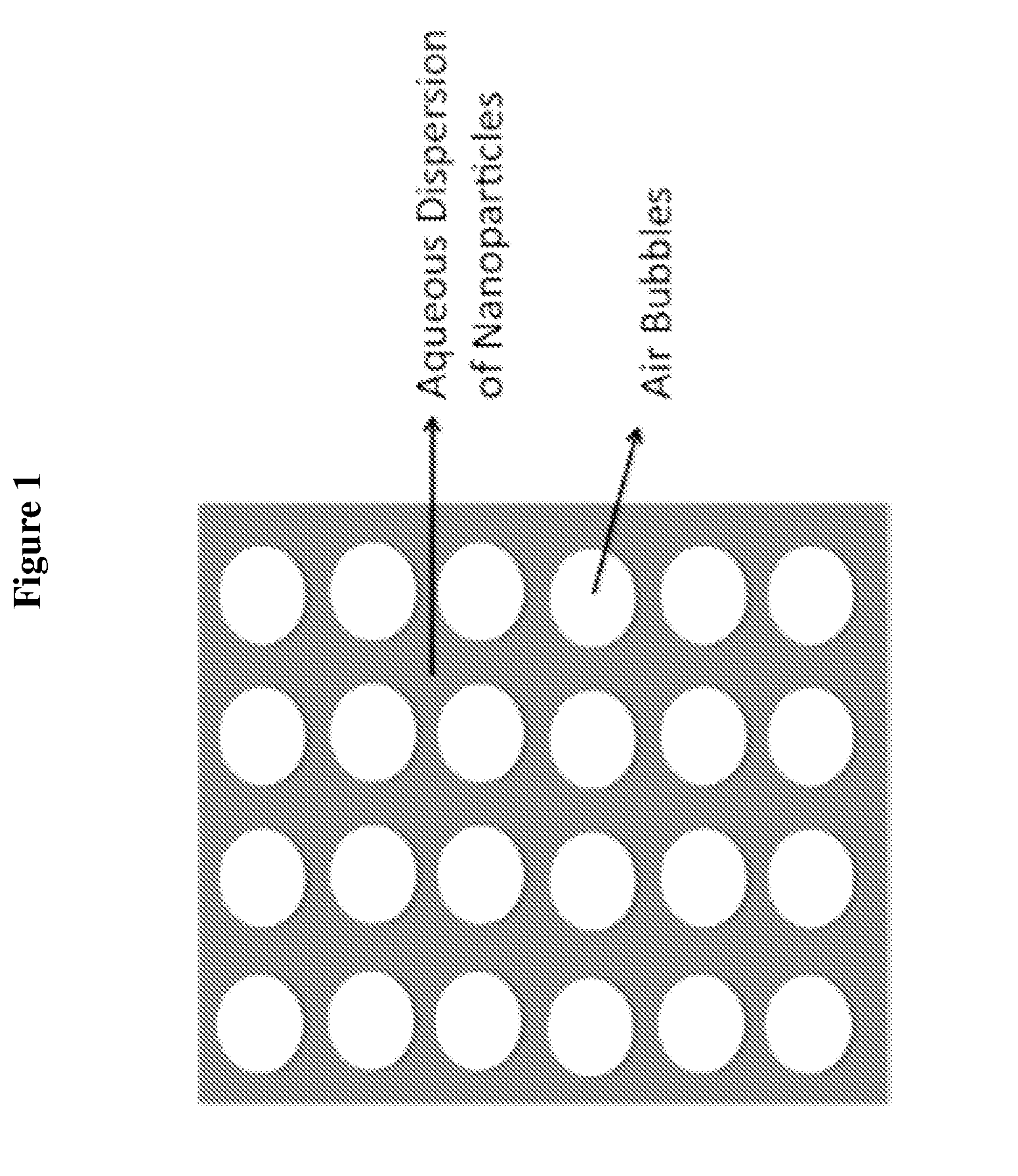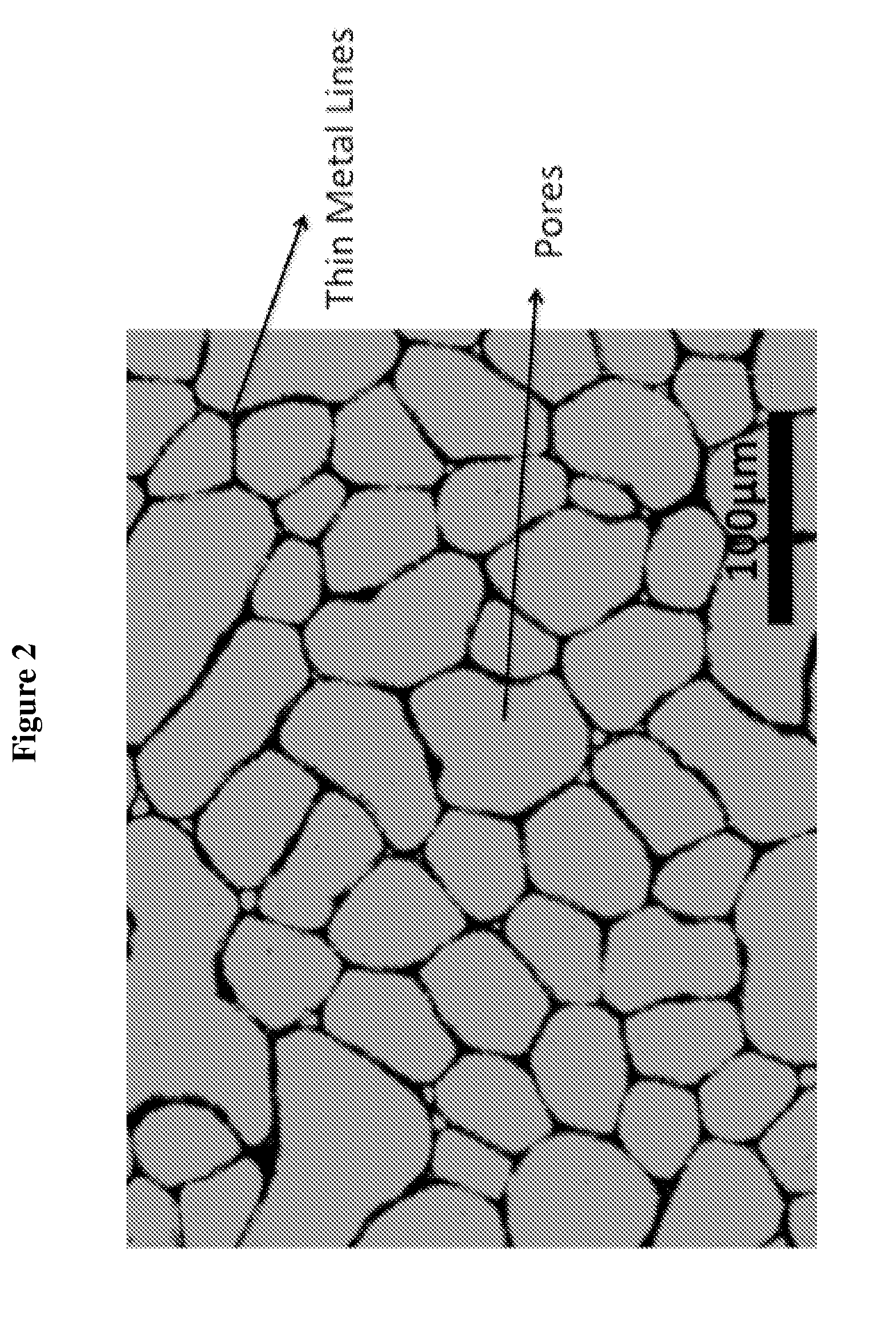Composition for making transparent conductive coating based on nanoparticle dispersion
a technology of nanoparticles and conductive coatings, applied in the direction of conductive materials, non-metal conductors, organic conductors, etc., can solve the problems of complex apparatuses having vacuum systems, poor productivity, and exceptional high cos
- Summary
- Abstract
- Description
- Claims
- Application Information
AI Technical Summary
Benefits of technology
Problems solved by technology
Method used
Image
Examples
example 1
Transparent Conductive Coating on Glass
Admix metal nanoparticles (silver nanoparticles, average particle size 80 nm), 10 g; water, 42.2 g; a foam forming chemical (Macare® G-2C), 2.2 g; a viscosity modifier (cocamidopropyl betaine), 0.28 g; a surfactant (Synperonic 91 / 6), 0.55 g; an adhesion promoter (Cartacoat B750), 0.28 g. Then homogenizing the obtained solution by ultrasonic energy (ultrasonic horn) for 2 minutes until a foam (bubble-in-water dispersion) formed. Spray the obtained homogenized foam solution onto the surface of glass by ultrasonic spray nozzle. This formulation gave a good developed chickwire-like network with pore sizes of 30 μm to 100 μm and Ag lines with 2 μm to 5 μm width. Reference is made now to FIG. 2, presenting a view taken by a means of a light microscope showing the chickwire-like network on a glass surface as obtained by the method as described in Example 1. This film has over 80% transparency in the range of 400 nm to 700 nm, as shown in FIG. 6, measu...
example 2
Transparent Conductive Coating on PET
Admix metal nanoparticles (silver nanoparticles, average particle size 30 nm), 8 g; water, 38.3 g; a foam forming chemical (Masurf G-2C), 2.7 g; a secondary solvent (ethanol), 2.7 g; a viscosity modifier (glycerol), 0.27 g; a surfactant (Surfynol 465), 0.91 g; a humectant, 0.27 g; an adhesion promoter(arabinogalactan), 0.27 g. Then homogenizing the obtained solution by ultrasonic energy (ultrasonic horn) for 2 minutes until a foam (bubble-in-water dispersion) formed. Spray the obtained homogenized foam solution onto the surface of polyethylene terephthalate (PET) by ultrasonic spray nozzle. This formulation gave a good developed chickwire-like network with pore sizes of 20 μm to 120 μm and Ag lines with 2 μm to 10 μm width. Reference is made now to FIG. 3, presenting a view taken by a means of a light microscope showing the chickwire-like network on a PET surface as obtained by the method as described in Example 2. This film has over 75% transpar...
PUM
 Login to View More
Login to View More Abstract
Description
Claims
Application Information
 Login to View More
Login to View More - R&D
- Intellectual Property
- Life Sciences
- Materials
- Tech Scout
- Unparalleled Data Quality
- Higher Quality Content
- 60% Fewer Hallucinations
Browse by: Latest US Patents, China's latest patents, Technical Efficacy Thesaurus, Application Domain, Technology Topic, Popular Technical Reports.
© 2025 PatSnap. All rights reserved.Legal|Privacy policy|Modern Slavery Act Transparency Statement|Sitemap|About US| Contact US: help@patsnap.com



